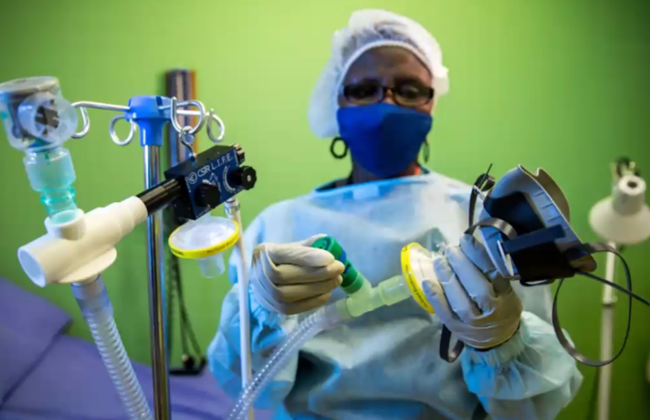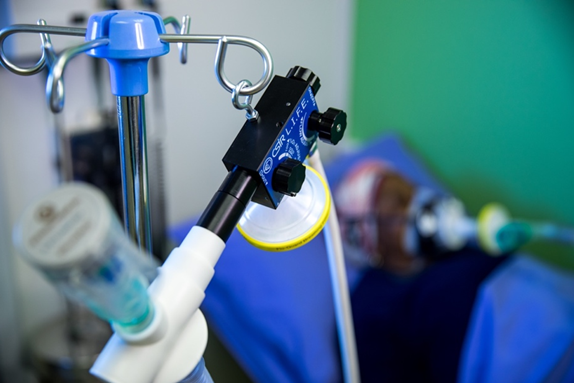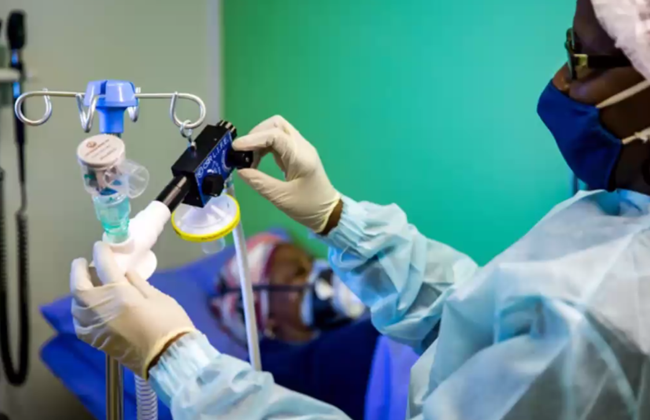- Ventilators are one of the main treatments for critical-care Covid-19 patients
- Shortages of these lifesaving machines prompted the SA government to develop a more cost-effective device
- Minister Ebrahim Patel provided an update on the project at a recent conference
Speaking at the National Covid-19 virtual conference that focused on health innovations and technologies, and social and economic sustainability during and after the Covid-19 pandemic, Minister of Trade and Industry Ebrahim Patel reported on the progress of the National Ventilator Project (NVP), an initiative undertaken by the government.
Patel explained that in March, when the virus reached South African shores, the country had no local manufacturing capacity for ventilators, which was concerning as the demand for ventilators quickly surged.
This led to the start of the NVP, whereby South African-designed and manufactured ventilators could be created. According to Patel, these are currently being rolled off the production line.
“Over the next month, we expect many thousands of non-invasive ventilators to be delivered to hospitals and medical facilities across the country, brought together through South African ingenuity and by South African hands,” he said.
Ventilators and Covid-19
The lives of many Covid-19 patients depend on ventilators. Being a respiratory virus, SARS-CoV-2, which causes Covid-19, can enter and invade the airways and lungs, attacking the respiratory system, which can lead to breathing difficulty and ultimately loss of life.
Medical ventilators are used to supply oxygen to the lungs of severely ill patients. Patel explained that under normal circumstances, hospitals have a basic and adequate supply of ventilators. These range from ambu-bag resuscitators, to nasal cannulas, to CPAPs and invasive-ventilation machines, and are bought from suppliers elsewhere in the world, based on normal need.
In April this year, when hospitals reported that they were unable to source ventilators on global markets, Patel and Minister Blade Nzimande decided to initiate the NVP, which is much cheaper than commercially-available ventilators.
“We appointed one of our top agencies, the South African Radio Astronomy Organisation (SARAO) to serve as project managers, given their world-class systems integration and systems engineering capabilities,” he said.
Focus on non-invasive ventilators
Based on clinical experience in Covid-19 epicentres such as China, Italy and the US, Patel explained that senior critical-care physicians advised the team to focus on the production of non-invasive Continuous Positive Airway Pressure devices (CPAPs), as they have the greatest potential impact on saving lives. (CPAPs are also used to help a person with obstructive sleep apnoea to breathe more easily.)
Patel added that the devices were thoroughly evaluated by the engineers and scientists at SARAO, to ensure compliance with international standards for ventilators, as well as usability in SA’s hospitals and medical facilities.
The development of the machine was completed after a few months during which prototypes were designed, developed and tested (while adhering to strict technical and safety specifications).
The need for a simple machine
“We needed a machine that could be used as easily in a private hospital in Sandton as in a field hospital in the Eastern Cape,” Patel said. He added that after prototypes of the most promising proposals were built, they were tested – first in the laboratory, and then in one of the country’s largest public hospitals.
The design of the machine was approved by the medical products regulator, and funding for the project was secured from the Solidarity Fund, Patel said.
How the device works
Each machine consists of about 30 separately manufactured components, said Patel.
“Today, the first batch of completed ventilators are coming off the assembly line, part of an initial order of 10 000 units which have been engineered by the Council for Scientific and Industrial Research. A second manufacturer is also producing a further few thousand. Twenty thousand units in all will be produced.”
Patel explained that the final assembly of the devices is taking place at the Akacia Medical facility just outside Cape Town, and from there they will be distributed to hospitals across the country.
Below is an image of a medical technician holding the device, showing the blending unit and patient mask. Patel explained that through a mask or hood, the device supplies a pressurised mixture of ambient air and industrial oxygen to the patient.
Patel also explained that the pressurised gas helps the patient by supplying a higher level of oxygen, and by keeping the airway and lung pressure elevated above the surrounding air pressure throughout the breathing cycle, which ensures that the patient’s lungs operate effectively.
The medical operator can also adjust the inspired oxygen proportion (FiO2) of the gas supplied to the patient, and can adjust the elevated pressure to the required level, which can be seen in the image below.
‘Ventilator project shows what is possible’
The shortage of testing kits, ventilators, medical-grade masks and other PPEs has underlined the importance of Africa developing a strong innovation and manufacturing capability, and of building more resilient economies, said Patel, and added that the NVP initiative shows what is possible:
“Disease and poverty are the challenge – science and solidarity are the weapons to fight this. Within the space of four months, our country has gone from having no capacity to produce CPAP ventilators, to now having the first units coming off the production line.
“As we build our production capacity, we will support our neighbours across the African continent with these ventilators... NVP is one example of solidarity and science, of what we can achieve when we work together toward common objectives,” Patel concluded.




 Publications
Publications
 Partners
Partners














